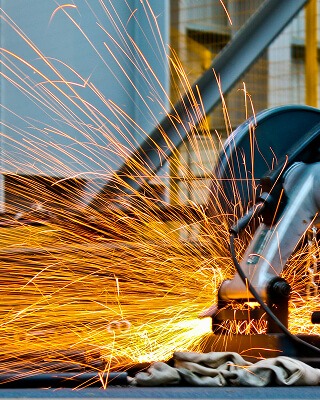Data Centers
Introduction to Industry
Data centers are the digital backbone of the modern world, powering everything from cloud computing and streaming services to financial systems and global communications. These facilities house thousands of servers, networking equipment, and storage systems that run 24/7, generating a tremendous amount of heat in the process. To ensure uninterrupted performance and avoid equipment failure, effective cooling is mission-critical.
Cooling towers play a central role in managing this heat. Most large-scale data centers use water-cooled systems, where heat from the servers is transferred to water, which is then cooled and recirculated via cooling towers. These towers dissipate heat through the evaporation of water, maintaining optimal operating temperatures for the equipment inside.
Current Challenges
This cooling process is resource-intensive and presents several operational and environmental challenges. The recirculating water in cooling towers is prone to scaling, corrosion, and biofilm buildup, all of which degrade heat exchange efficiency, increase energy consumption, and drive up maintenance costs. If not properly managed, these issues can shorten equipment lifespan, elevate operational risk, and pose health hazards due to microbial growth.
In response to the rising environmental impact of data centers, new legislation and performance standards are being introduced globally—Singapore included. The Green Mark for Data Centres (GMDC), developed by the Building and Construction Authority (BCA) and the Infocomm Media Development Authority (IMDA), sets clear benchmarks for energy and water efficiency, carbon footprint reduction, and overall sustainability in data center operations. This framework encourages the adoption of best-in-class technologies that reduce environmental impact while maintaining performance.
As data centers scale and sustainability becomes a core focus, optimizing cooling tower performance is no longer just a technical task—it’s a compliance requirement and strategic priority. Embracing advanced water treatment technologies that reduce chemical use, improve heat exchange, and minimize water loss is key to meeting both regulatory standards and ESG commitments.
What's Being Done Now?
What Hydroleap Brings to the Sector
Introduction to Industry
Data centers are the digital backbone of the modern world, powering everything from cloud computing and streaming services to financial systems and global communications. These facilities house thousands of servers, networking equipment, and storage systems that run 24/7, generating a tremendous amount of heat in the process. To ensure uninterrupted performance and avoid equipment failure, effective cooling is mission-critical.
Cooling towers play a central role in managing this heat. Most large-scale data centers use water-cooled systems, where heat from the servers is transferred to water, which is then cooled and recirculated via cooling towers. These towers dissipate heat through the evaporation of water, maintaining optimal operating temperatures for the equipment inside.
Current Challenges
This cooling process is resource-intensive and presents several operational and environmental challenges. The recirculating water in cooling towers is prone to scaling, corrosion, and biofilm buildup, all of which degrade heat exchange efficiency, increase energy consumption, and drive up maintenance costs. If not properly managed, these issues can shorten equipment lifespan, elevate operational risk, and pose health hazards due to microbial growth.
In response to the rising environmental impact of data centers, new legislation and performance standards are being introduced globally—Singapore included. The Green Mark for Data Centres (GMDC), developed by the Building and Construction Authority (BCA) and the Infocomm Media Development Authority (IMDA), sets clear benchmarks for energy and water efficiency, carbon footprint reduction, and overall sustainability in data center operations. This framework encourages the adoption of best-in-class technologies that reduce environmental impact while maintaining performance.
As data centers scale and sustainability becomes a core focus, optimizing cooling tower performance is no longer just a technical task—it’s a compliance requirement and strategic priority. Embracing advanced water treatment technologies that reduce chemical use, improve heat exchange, and minimize water loss is key to meeting both regulatory standards and ESG commitments.






